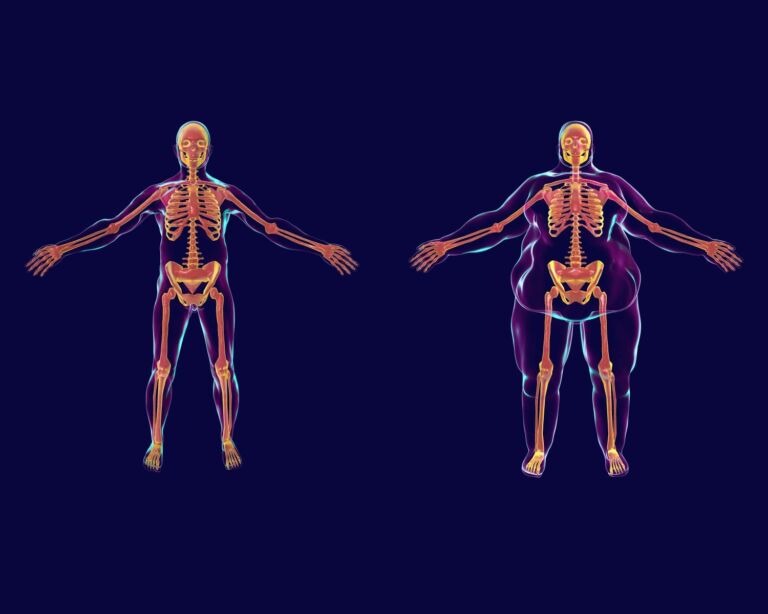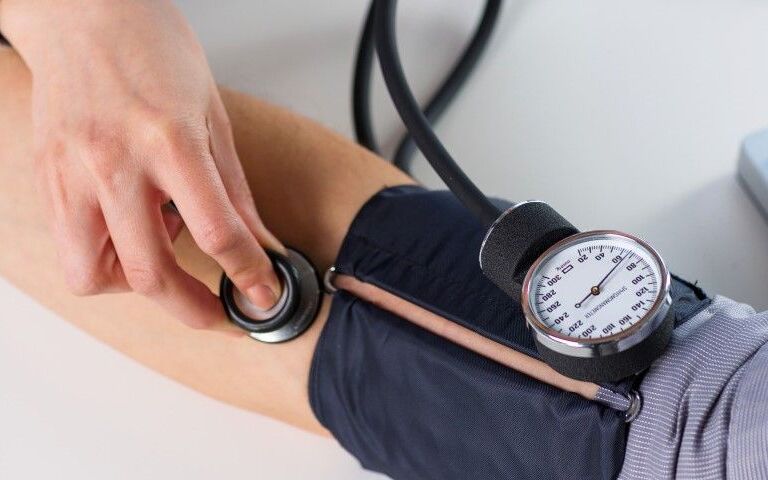Overview: What is breast cancer
The female breast consists of glandular, fatty and connective tissue. The glandular tissue is composed of various glandular lobes in which breast milk is formed, which then passes through the milk ducts to the nipple. In addition, blood and lymph vessels run through the breast tissue. Hormonal influences due to the menstrual cycle, pregnancy and breastfeeding, and menopause constantly change the tissue of the breast. Breast cancer develops when cells begin to multiply uncontrollably. Most often, malignant tumors develop in the glandular portion of the breast. Lobular breast carcinoma arises in the glandular lobes, while ductal arises in the milk ducts. Furthermore, experts distinguish between invasive and non-invasive breast carcinoma:
- invasive breast carcinoma: the cancer cells have already spread to the surrounding tissue.
- non-invasive breast carcinoma: tumor is still localized, preform or early form of breast cancer (ductal carcinoma in situ)
If the female breast is divided into quarters, then most malignant changes occur in the upper, outer quarter – that is, in the area between the armpit and collarbone. Regular palpation is the best way to get to know and feel your breast. In this way, you will notice even small changes at an early stage and can contact us for clarification.
Malignant tumors develop rather rarely in the connective tissue of the breast, but then they are not breast cancer, but skin or connective tissue tumors.
Breast Center of the Comprehensive Cancer Center Zurich
At the USZ, numerous departments have joined forces to form a breast center. The center is certified according to the guidelines of the German Cancer Society (DKG). A team of experts specializing in the medical care of breast cancer works closely together here for the benefit of our patients. At DKG-certified centers, patients are treated according to strict quality criteria and, according to current studies, have a better chance of survival on average.
Breast cancer: causes and risk factors
There are risk factors for breast cancer that you can influence to some degree with your lifestyle and others that you have no control over. Risk factors for breast cancer may include:
- early menstruation, late menopause
- prolonged use of female sex hormones, hormone replacement therapy during menopause
- Overweight and lack of exercise after menopause
- regular high alcohol consumption
- Childlessness or late first pregnancy
- benign proliferation of glandular tissue
Age is also among the risk factors for breast cancer. As the years go by, the risk increases; most women are over 65 at the time of their diagnosis.
Hormone replacement therapies during menopause are now viewed very critically. The risk of breast cancer increases with the duration of treatment. Medical experts therefore recommend only short-term therapies with as low doses as possible against menopausal symptoms.
Breast cancer and BRCA-1 and BRCA-2 genes
There are two so-called tumor genes BRCA-1 and BRCA-2 that have been shown to confer a high risk of developing breast cancer. Women with this genetic mutation develop breast carcinoma with a frequency of between 50 and 80 percent, usually around the age of 40. The BRCA genes also increase the risk of other forms of tumor disease and even men are affected, but not to the same extent.
If you want to take a genetic test as a precaution because you have a family history of increased risk, contact our designated breast center. If a BRCA mutation has already been detected in your family, then relatives should seek counseling and testing. Genetic testing makes sense because, on the one hand, preventive and prophylactic measures can be derived from it and, on the other hand, you can be relieved if the results are negative. In Switzerland, genetic diagnostics are recommended from a mutation probability of ten percent.

Symptoms: Breast cancer
Breast cancer does not initially cause any discomfort. The safest way to detect possible malignant changes is regular breast self-examination. If you feel your breasts yourself every month, preferably after your period, you will notice small changes immediately. If you are taking hormones for birth control, you should examine your breasts at the beginning of the monthly pack. Post-menopausal women should set a fixed appointment for themselves every four weeks. Possible signs of a malignant tumor in the breast area may include:
- suddenly appearing lumps and indurations
- Changes in the skin or nipple, redness
- sudden differences in size or appearance of the breasts
- palpable lymph nodes in the axilla
- Discharge from a nipple
- Weight loss
- Permanent fatigue
If you notice any of these symptoms, it is advisable to have the exact diagnosis clarified by the specialist or in the hospital. Nodules are usually palpable from a size of one cm, they do not cause chest pain, feel hard and cannot be moved in the tissue. All of the changes listed do not have to be breast cancer; there may be another disease behind them. However, the earlier a malignant tumor is detected, the better the prognosis usually is. However, experts agree that self-examination is not sufficient for early detection. Therefore, take advantage of the opportunities for preventive examinations.
Second opinion for breast cancer
When a cancer diagnosis is made, a second medical opinion is an important decision-making tool. The Comprehensive Cancer Center Zurich supports you with a professional expert opinion. They receive a thorough analysis of the situation as well as personal advice and quick answers to their questions.
Breast cancer - diagnosis by us
If a malignant change in the breast is suspected, we will first take a mammogram. In some cases, an ultrasound examination is also appropriate. The aim is to distinguish benign from malignant formations and to detect the so-called microcalcifications that accumulate in the mammary gland tissue and may indicate a tumor that is still small. If there is a suspicion, we take a tissue sample, a biopsy, and have it examined for tumor characteristics in the laboratory. The biopsy procedures commonly used today are:
- Punch biopsy – under local anesthesia, a hollow needle is pushed to the altered area and a tissue sample is taken. After the procedure, there may be bruising, which disappears after a short time.
- Vacuum biopsy – this method allows larger tissue samples to be taken. The procedure is done with a thicker needle and takes longer than a punch. A small scar may remain from the procedure. Depending on the findings, surgery may be necessary afterwards. To be able to find the exact spot again, a small marking wire is inserted there.
If the removed tissue contains tumor cells, then further examinations follow to determine how aggressive the tumor is, to which type it belongs and how far it has already spread. In addition, there are various tests so that the appropriate therapy can be tailored to this. For example, it plays a role whether the tumor is stimulated in growth by hormones or not, i.e. whether it is hormone receptor positive. Or whether there are certain receptors through which proliferation of cancer cells is stimulated. It is also important to clarify whether there are already tumor cells in the lymph nodes; they are examined with palpation and ultrasound and punctured if suspected. When women already have
- a larger tumor is present,
- lymph nodes are affected,
- the tumor shows aggressive growth,
- cancer-typical complaints are present,
then further examinations such as a breast MRI, a computer tomography and/or a PET-CT are appropriate in order to find metastases and to be able to plan the therapy in a targeted manner.
Breast cancer – classification into stages
If the suspicion of breast cancer is confirmed during the examinations, then it is important to determine the stage precisely in order to direct the therapy accordingly. The spread of the tumor is described by experts with the TNM classification.
- T for tumor: T describes the size of the tumor from T1 to T4. Tis means tumor in situ, which means that the tumor has not yet spread to the surrounding tissue.
- N stands for lat. Nodus (node): It means lymph nodes. The number of affected lymph nodes is described as N0 (none) to N3.
- M for metastases: M describes the situation of metastases from M0 (none) to MX (unknown) to M1 (metastases present in other organs).
Self-help groups
The exchange with people who are affected by the same disease can be a great support in coping with the disease. Advice on finding a suitable self-help group is available from Selbsthilfe Zürich. Self-Help Zurich and the University Hospital Zurich are cooperation partners in the national project “Health literacy thanks to self-help-friendly hospitals”.
Breast cancer - prevention, early detection, prognosis
It is still not clear what the triggers for breast cancer may be. Many factors remain unclear. However, on the basis of recent research, some statements can be made about possible risk factors. Thus, there appears to be a link between physical inactivity, obesity and breast cancer risk. Being overweight both before and after menopause seems to increase the risk. Alcohol also affects the likelihood of developing breast cancer. A high-fat diet with lots of animal fats makes for higher blood estrogen levels, another risk for breast cancer.
You can help keep your risk lower with a healthy balanced diet, avoiding a lot of alcohol and a regular exercise program. If, in addition, you get into the habit of regularly examining your breasts yourself and take advantage of the preventive examinations offered, you will have made an important contribution to your health.
Breast cancer progression and prognosis
In addition to early detection, conscientious aftercare is also part of the treatment. While breast cancer is one of the most common cancers in women, it also has a good cure rate today. Five years after diagnosis, 80 percent of women with the disease are still alive. At least ten years of follow-up is recommended by experts. The point is,
- detect new tumors at an early stage,
- treat the consequences of therapy and
- To accompany anti-hormone therapies.
If the breast had to be completely removed, there are options for reconstruction. Reconstruction can take place promptly or several years later. The methods of breast reconstruction are:
- Reconstruction with the body’s own tissue,
- Reconstruction with silicone implants,
- Breast prostheses that are inserted into the bra.
Breast cancer: treatment
Breast cancer treatment involves the complete removal of tumor tissue. For most women today, this can be done in a breast-conserving procedure. Following this, radiation therapy is given. Radiation is intended to destroy any tumor cells or minute metastases that may still be present. Since research has now found out a lot about the malignant tumors of the female (and male) breast, the therapy can also be very individually tailored to you.






